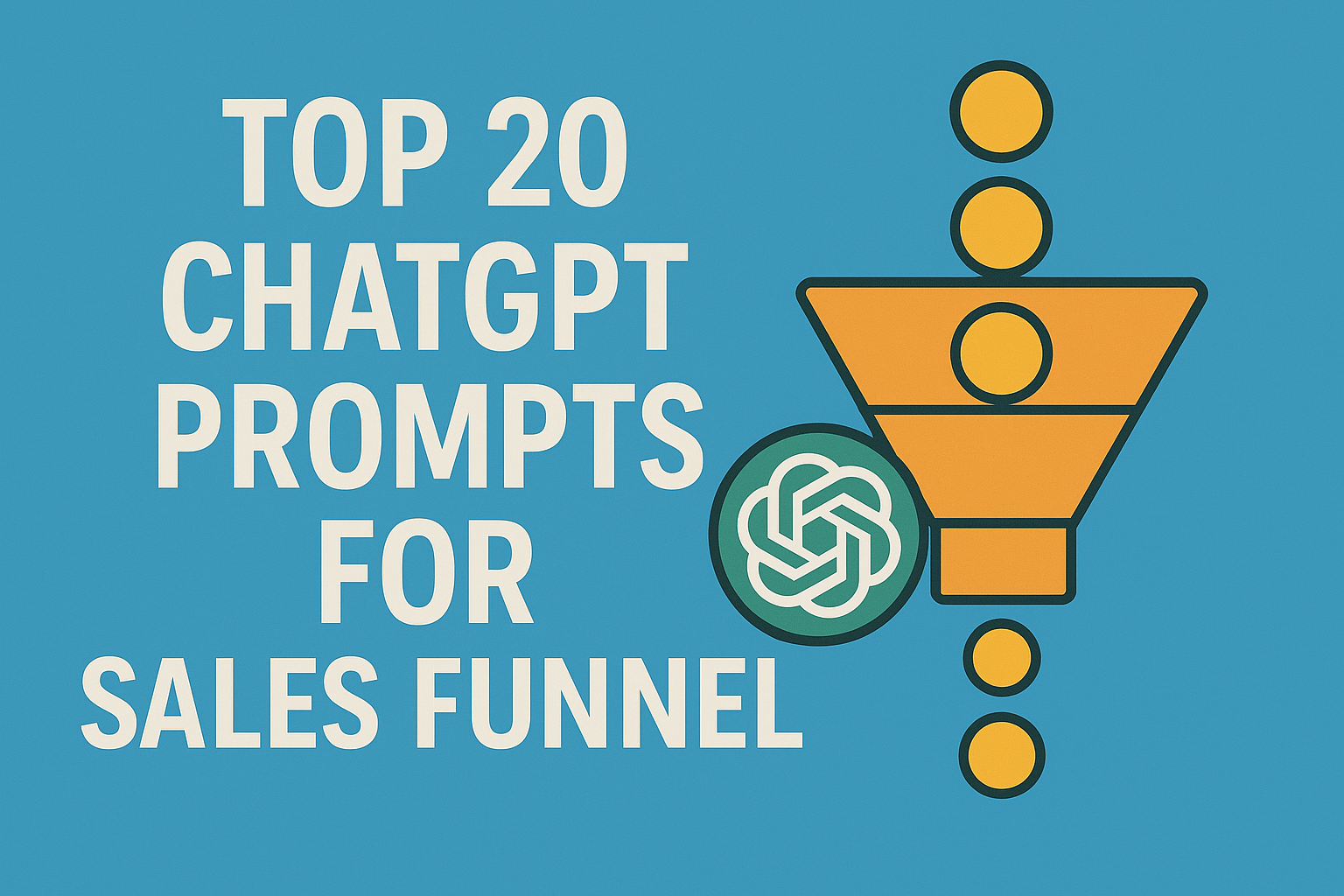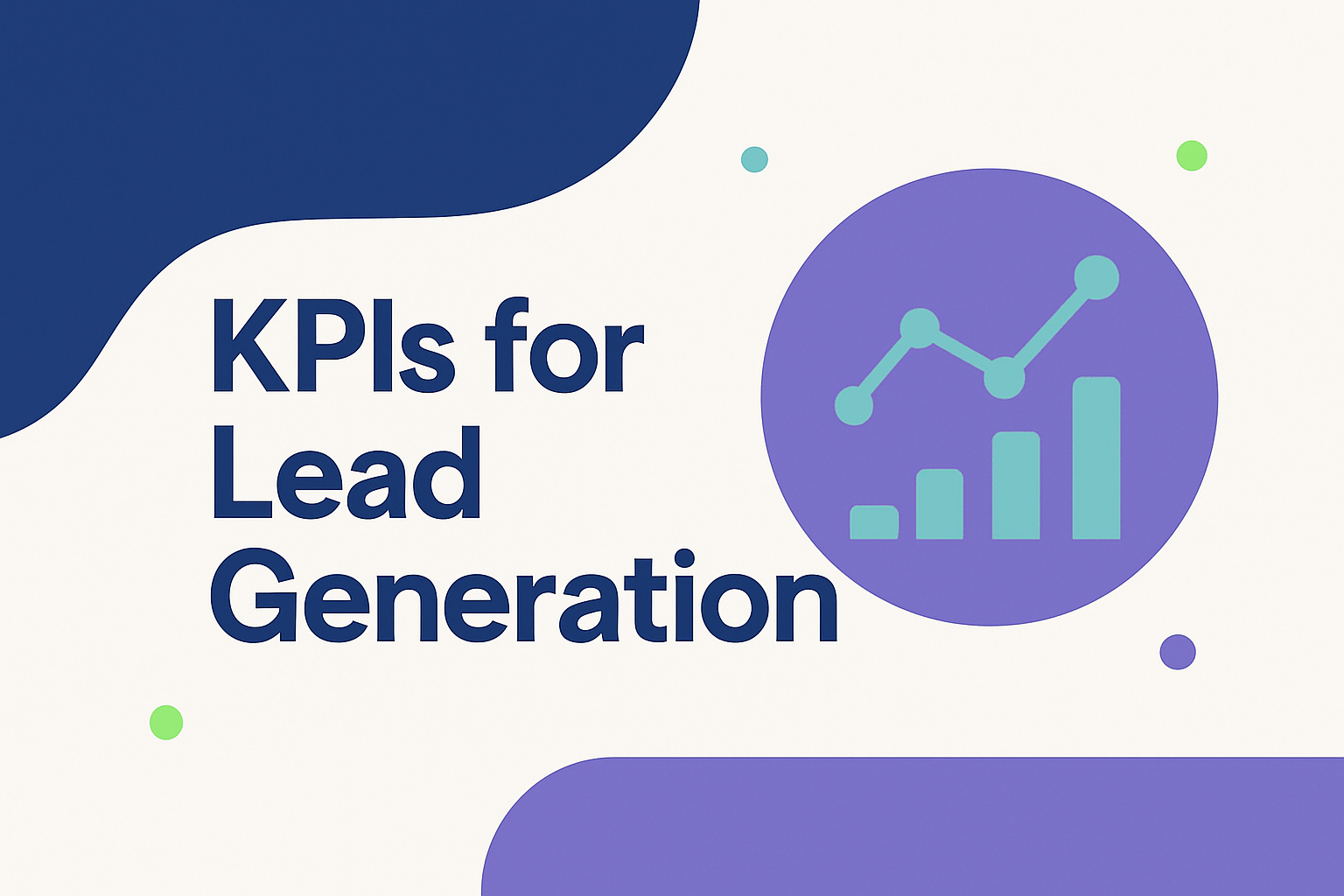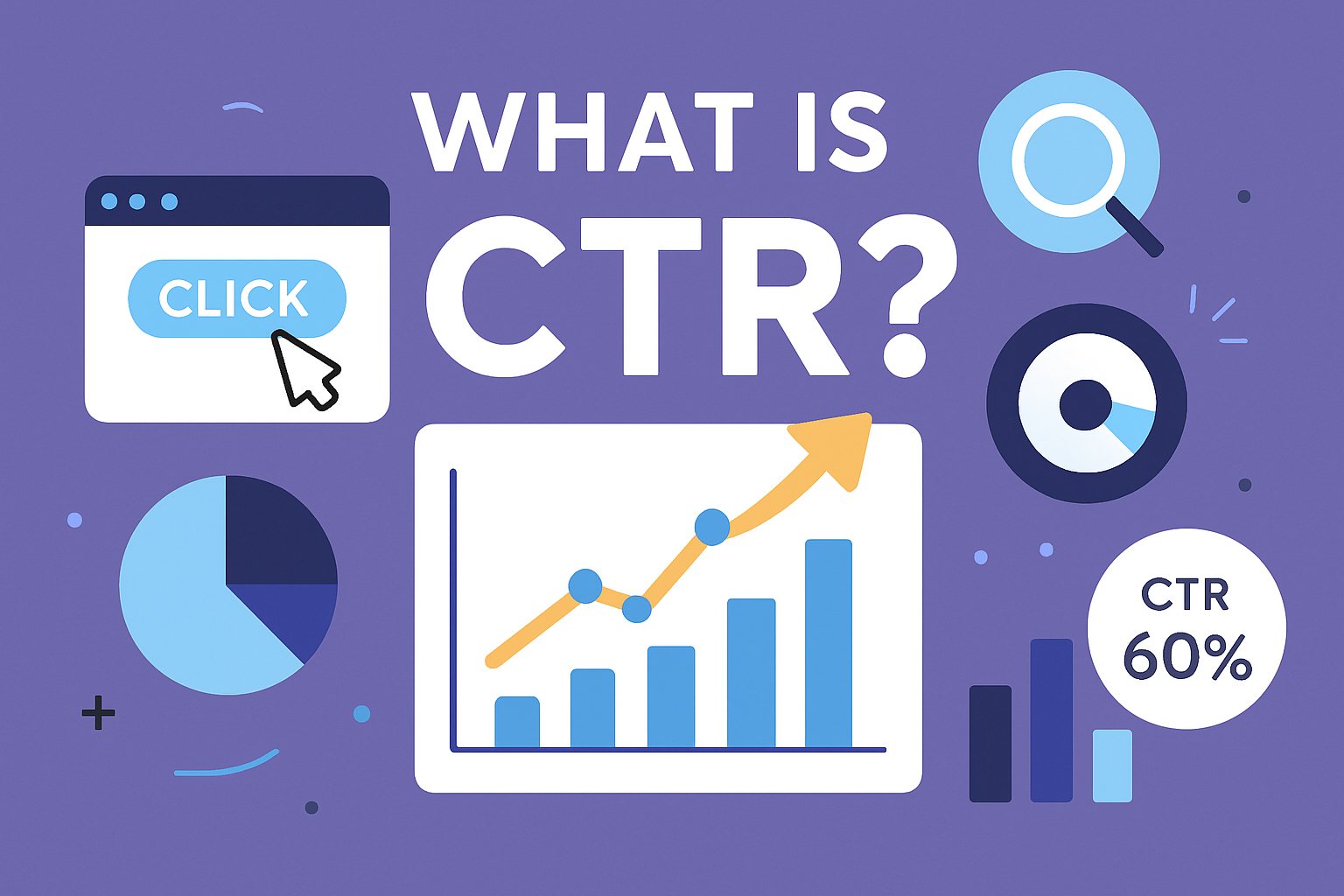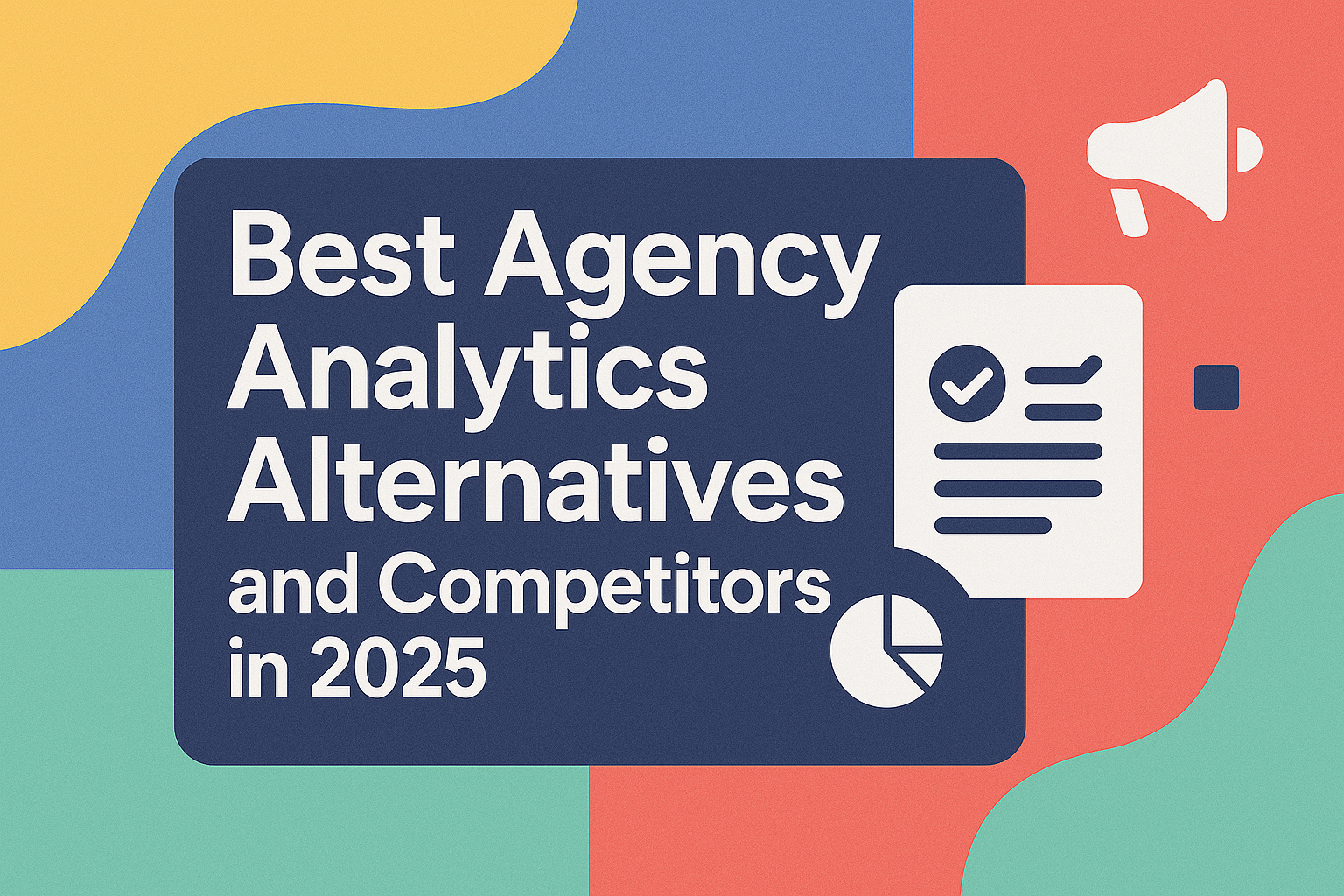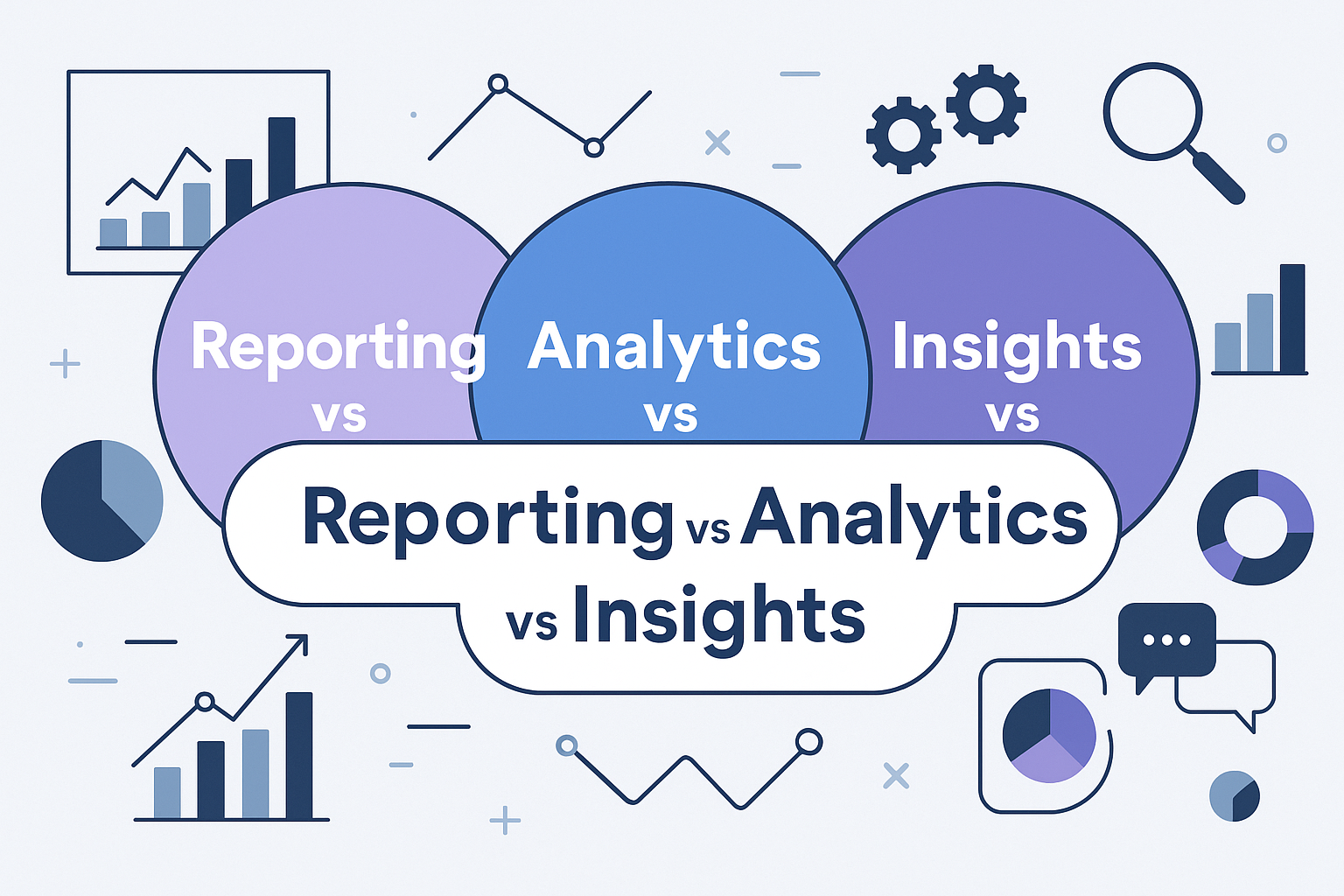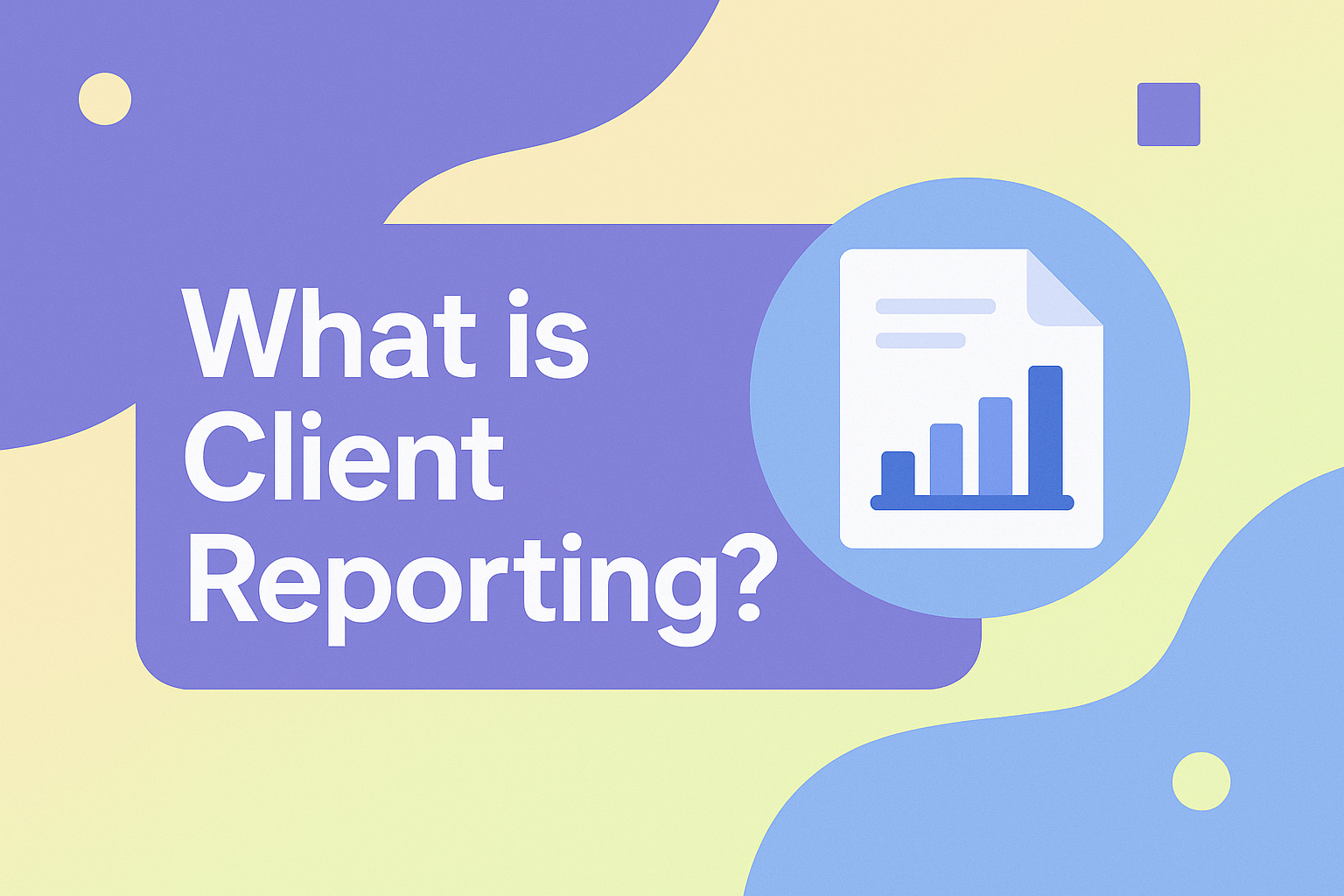Top 20 ChatGPT Prompts for Sales Funnel
Key Takeaways
- Know your customer journey. Map out the steps of your customers’ journey so your sales team knows when and how to engage.
- Meeting non-linear customer behavior with agile selling strategies and analytics drives more effective marketing
- Using AI tools simplifies sales, personalizes interaction, and frees up teams for high-value work.
- Humanized: Writing ChatGPT prompts for every sales funnel stage generates targeted, audience-specific content that assists in lead nurturing and conversion.
- With an emphasis on emotional hot buttons, customer pain, and unique value propositions, building bonds and carving out space in the marketplace.
- Define performance metrics to gauge the impact of AI-generated content, allowing for iterative refinement and more effective sales strategies.
ChatGPT prompts are strategic, pre-written instructions that help guide AI to generate high-impact content tailored for each phase of the sales funnel — from grabbing leads to following up and sealing the deal.
Whether you’re nurturing cold prospects or closing warm leads, these prompts save time, improve consistency, and ensure your messaging hits the mark.
When used smartly, they boost engagement, streamline workflows, and empower teams to move faster and convert more.
In the sections ahead, you’ll learn how to build and apply prompts that align with real-world sales goals, so your funnel flows smoother from top to bottom.
Rethinking the Sales Funnel

Sales funnels are predictable steps, right? People buy differently now. Digital tools, shifting buyer habits, and the rise of AI all mean that old models can overlook crucial nuances or fall out of step with real-world needs.
Now, it’s critical to map the entire customer journey, identify gaps, and employ adaptive, data-driven models that accurately reflect how buyers flow.
The Customer Journey

The customer journey has two major phases: being in market, where a buyer is actively seeking a solution, and not in market, where there’s no intent. With such a small slice of buyers (3% or so) in the market at any time, it’s easy to miss most prospects if you look only at those ready to buy.
Mapping out all touchpoints—ads, social posts, emails, or chats—lets you see where customers fall away or proceed. These touchpoints tend to be lead magnets like webinars or short guides, which have now supplanted long eBooks as better early hooks.
Decision shaping moments can be when a customer becomes aware of a product, expresses interest, or reaches the all-important ‘desire’ stage. Optimization of the desire stage is key to attracting attention and inspiring action.
Peeking at customer feedback—via surveys, social listening, or support channels—enables teams to observe where users stumble or lose enthusiasm. Use this feedback to iterate on messages and content so each step of the journey feels seamless and supportive, not pushy.
The Non-Linear Path
Buyers don’t go linearly. They bounce between discovery, evaluation, and yes, even backtracking. Rethinking the sales funnel to account for these patterns means planning for flexibility at every stage.
Analytics can follow the flow of people through the funnel, even if it loops back or jumps forward. For instance, someone might register for a demo, then check out reviews, and then return weeks later to decide.
Sales teams must embrace this uncertainty. Focusing on clear measurement at key junctions—such as lead conversion or content engagement–helps demonstrate what’s effective, even in a non-linear journey.
Bottlenecks, such as feeble calls to action or murky value in the awareness stage, can be addressed with routine data auditing and feedback.
The AI Advantage

AI is now pretty big in sales funnel territory. With AI, teams can accelerate lead management by scoring and qualifying leads with less manual effort.
AI-powered insights can customize communication and content for each buyer’s requirements, adding a personal touch to every interaction. For example, AI tools can recommend when to send follow-up emails or which product features to emphasize based on historical information.
Automating routine tasks—like reminder emails, interaction tracking, or record updating—frees up sales teams for more valuable work, like trust-building or complex problem-solving.
AI can even detect trends in feedback and sales information to help predict future demand and funnel gaps. This provides a more insightful view of what supports or impedes conversions.
Growth Beyond Funnels
A new sales model is not a funnel. It mixes funnels, loops, and continuous engagement. Retention and post-sale support are just as important as that initial click or sign-up.
Teams need to be oriented toward lifetime value, not just the initial sale.
Top 20 ChatGPT Prompts for Sales Funnel
If you’re looking to maximize your sales funnel effectiveness, utilizing the right ChatGPT prompts for the sales funnel can significantly streamline your marketing and sales processes.
Here are the top 20 ChatGPT prompts you can immediately apply to optimize your sales funnel:
1. Define Your Ideal Customer
Prompt: “Describe the characteristics of my ideal customer persona based on [your product/service].”
2. Creating Attention-Grabbing Headlines
Prompt: “Generate five catchy headlines that will grab attention for my sales funnel landing page about [your offer].”
3. Writing Compelling Sales Copy
Prompt: “Write persuasive sales copy highlighting the key benefits of [your product/service].”
4. Crafting Email Sequences
Prompt: “Outline a five-email sequence for nurturing leads interested in [your product/service].”
5. Designing Irresistible Offers
Prompt: “Suggest three irresistible offers I can include in my sales funnel to boost conversions.”
6. Developing Lead Magnets
Prompt: “Provide ideas for an effective lead magnet relevant to [your niche or product].”
7. Optimizing Your Call-To-Action
Prompt: “Create three strong calls-to-action (CTAs) to increase conversions on my sales funnel landing page.”
8. Generating Customer Testimonials
Prompt: “Draft a request email template to gather testimonials from satisfied customers about [your product/service].”
9. Personalizing Customer Experiences
Prompt: “Suggest ways to personalize my sales funnel to increase customer engagement for [your product/service].”
10. Handling Common Objections
Prompt: “List common customer objections for [your product/service] and provide effective responses.”
11. Creating Upsell Opportunities
Prompt: “Recommend upsell opportunities complementary to [your product/service] to increase average order value.”
12. Improving Your Follow-Up Strategy
Prompt: “Outline a follow-up strategy for leads who haven’t responded after initial contact about [your offer].”
13. Crafting Engaging Social Proof
Prompt: “Generate examples of social proof I can use on my sales funnel landing page for [your product/service].”
14. Optimizing Landing Page Content
Prompt: “Suggest improvements to enhance conversions on my current landing page promoting [your offer].”
15. Using Scarcity and Urgency
Prompt: “Create copy that introduces urgency and scarcity effectively into my sales funnel for [your product/service].”
16. Writing Effective Ad Copy
Prompt: “Write compelling ad copy tailored to attract leads into my sales funnel for [your product/service].”
17. Segmenting Your Audience
Prompt: “Explain how to segment my audience effectively within my sales funnel for better targeting of [your offer].”
18. Improving Conversion Rates
Prompt: “List actionable tips to increase conversion rates at each stage of my sales funnel for [your product/service].”
19. Crafting Webinar Scripts
Prompt: “Outline a high-converting webinar script that introduces and sells [your product/service].”
20. Creating Effective Retargeting Ads
Prompt: “Develop copy ideas for retargeting ads aimed at visitors who left my sales funnel without purchasing [your product/service].”
Using these powerful ChatGPT prompts for your sales funnel can streamline your processes, enhance customer engagement, and significantly boost your conversion rates.

Crafting Superior Prompts

Great prompts influence what you receive from ChatGPT, particularly when custom-tuning messages for each step of a sales funnel. These prompts transform general concepts into targeted, topical pieces that resonate with varying reader bases. It requires technical finesse as well as a genuine understanding of your product, service, and marketplace.
Here are four foundational steps for constructing effective prompts.
Define Persona
- Age, gender, job role, and geographic location
- Professional goals and daily challenges
- Preferred communication channels and buying behaviors
- Common pain points, motivations, and values
Long before you write prompts, define who you’re talking to. Begin by enumerating fundamental characteristics of your perfect client—perhaps they’re marketing chiefs at international firms, proprietors of mom-and-pop shops, or enterprise SaaS purchasers.
Segment audiences using real data: demographics, behaviors, and psychographics. Use surveys, analytics, and interviews to flesh out these profiles. It could be a beefed-up persona might tell you your audience is a middle manager who prizes efficiency or an agency leader looking for inexpensive reporting solutions.
Personas anchor your prompts in actual needs, so your output hits the pain points that count.
Set Context

Give a clear background so ChatGPT knows what task it’s solving. Specify the goal: Is it to drive awareness, boost conversions, or push product demos? Share industry details or competitive trends when needed. If your tool is a low-cost AgencyAnalytics alternative, spell that out.
Set the expected outcome for each prompt, like “write a comparison for SaaS buyers” or “draft an outreach email for decision-makers.” The more context you add, the more relevant and focused your results.
For example, “Write a LinkedIn message for European marketing agencies seeking faster reporting” tells ChatGPT what matters. Context curbs bias as well. If your prompt makes assumptions or omits critical information, your content will be nebulous or off target.
Consider what your character knows, desires, and encounters every day. With context, prompts produce sales material that’s practical and precise, be it a landing page or a case study.
Specify Tone

Select the tone appropriate for your audience and brand—formal, conversational, warm, or matter-of-fact. If your brand advocates simplicity, request straightforward copy and direct calls to action. Test different tones: one prompt could be “Write a concise, professional intro for a SaaS report,” while another asks for a friendly, casual style.
Test results against each other to determine which best matches customer responses. Tone = how you want to feel. For technical buyers, be authoritative. Creative teams, chill but helpful. A consistent tone across prompts establishes trust and recognition over time.
Iterate and Refine
Then check all your outputs for clarity, correctness, and punch. Collect input from your team—sales reps can identify what clicks with leads or prompts fall flat. Experiment with fresh prompt phrasing and measure which generates more meetings or spur demos sign-ups.
Maintain a running list of prompt tweaks/what works best. Minor tweaks in phrasing or formatting can add up. This loop of testing and tweaking is the heart of prompt engineering, driving more effective replies as you iterate.
Beyond Generic Content
To move beyond shallow messaging is to speak to what people experience, desire, and require. Great sales funnel content mixes genuine words, hard information, and unforgettable narrative. It plays in and across markets and platforms, but it begins with understanding your audience inside and out.
Emotional Triggers

Emotions are a big part of what motivates a purchase. The majority of buyers respond to a sense of trust or hope, or even FOMO. For instance, prompts to ChatGPT that say, “write a product story illustrating how overwhelmed parents experience liberation after discovering a time-saving app” outperform feature listing prompts.
Tales of actual individuals facing down adversity humanize ideas. Visuals can contribute to this by demonstrating authentic responses—imagine a testimonial video featuring someone expressing their enthusiasm or comfort post-service experience.
When content features testimonials or anecdotes from customers who experienced an actual difference—i.e., ‘I was drowning until I tried this software, now my workday is much leaner’—it resonates more deeply.
Pain Point Focus
Understanding what keeps your audience up at night is critical. Industry research, original surveys, and customer support logs provide insight into real struggles. ChatGPT pain-point focused prompts like ‘explain how our platform reduces reporting time for agencies’ help hone the message.
Directly tackling pain points—such as demonstrating how a SaaS product eliminates report grunt work for marketing teams—exhibits empathy and understanding. Case studies are powerful too: a digital agency shares how automation tools saved them 15 hours a week.
Inserting FAQs saying “How does this help me?” or “Can it work with my current tools?” makes content feel more specific and fosters trust with readers.
Unique Value Proposition

For any company, you need a sharp message about what makes you different. Unique value proposition (UVP) should be simple and specific. For example: “Our marketing dashboard pulls all your data into one customizable report for less than half the price of most tools.
Prompts such as “explain how our tool saves agencies money and time, unlike competitors” keeps messaging focused. Consistency counts, so this core benefit should appear in landing pages, ads, and follow-up emails.
It’s not about hype, it’s about demonstrable impact, such as how real-time automation or local language support saves teams time and money.
Storytelling Techniques
Stories make facts stick. Using before/after or customer journey type prompts develops a more intense connection. One prompt could be: “Write a case study showing how a SaaS buyer increased ROI after switching to our platform.
Sprinkling in some short anecdotes or user quotes humanizes content. Providing evidence—such as referencing a study demonstrating 60 percent increased persistence among users of a novel marketing device—increases believability.
Every story, fact, and quote should fit the audience’s culture and context.
Measure AI Impact

To measure AI’s real value in sales funnels is to select appropriate metrics, maintain goal orientation, and remain receptive to both quantitative data and user feedback. Because there’s no one way to measure AI’s impact, it’s useful to incorporate a combination of quantitative data and input from customers and teams.
For sales funnels, target AI-generated prompts impact engagement, conversion lifts, and the customer journey.
-
Identify clear KPIs: Set benchmarks like click-through rate, conversion rate, and average deal size.
-
Monitor engagement: Track user actions—clicks, shares, and time spent with content.
-
Review conversion rates: Compare the number of prospects moving from one funnel stage to the next.
-
Collect feedback: Ask customers and teams for their input on AI-generated content.
-
Compare before and after: Analyze pre- and post-AI performance data.
-
Factor in qualitative gains: Look at improved decision-making or better customer experiences.
-
Keep measuring: Make measurements ongoing, not a one-time task.
Engagement Metrics
Click-through rates and time on page both demonstrate the level of user interest in AI-generated content. High click rates indicate that the prompts are direct and attractive, and extended page visits imply users are engaged and discovering utility.
Social media is yet another area to observe. Likes, shares, and comments can help expose what’s working and what’s not. If a post receives many shares, the message or the offer probably connects well.
Email statistics are important as well. Open rates and replies can measure whether subject lines and content are motivating action. For instance, if an AI prompt in your email campaign increases open rates by 15%, that’s a no-nonsense signal of greater engagement.
All these metrics help teams see what messages drive genuine engagement. Tuning content to these learnings makes future campaigns perform even better.
Conversion Rates
|
Funnel Stage |
Pre-AI Conversion Rate (%) |
Post-AI Conversion Rate (%) |
|---|---|---|
|
Awareness |
10 |
16 |
|
Consideration |
8 |
12 |
|
Decision |
4 |
7 |
|
Purchase |
2 |
4 |
A/B testing reveals what prompts or approaches are most effective. For example, test two prompt sets in a chatbot and measure the conversion of prospects to the next funnel stage. This allows you to separate what’s working.
Past sales data helps predict future trends. By tracking conversion rates over time, teams can identify optimizations or emerging friction points. On this basis, tune prompts and calls to action to amplify results.
Qualitative Feedback
Customer surveys and interviews are about more than just numbers. They indicate whether users like AI-generated prompts, if directions are explicit, and how the tone suits various cultures.
Occasionally, this feedback identifies pain points, such as confusing wording or absence of context, that metrics by themselves never reveal. Once you’ve gathered some feedback, identify trends—perhaps some users say they feel more comfortable with AI recommendations when paired with illustrations.
Leverage these insights to fine-tune your sales scripts and outreach. Sending feedback to the sales team keeps everyone on the same page and helps course-correct for excellent service.
Ongoing Evaluation
Measuring AI’s impact is not a one-time job. It requires frequent monitoring, adjustments, and transparent feedback channels.
This continuous feedback loop keeps teams nimble and ensures AI continues to generate value.
Real-World AI Integration

AI is transforming the sales funnels businesses operate, and this is more than hype. A lot of companies are already leveraging AI tools to make their sales process slicker, seal more deals, and spend less. Shopify, for example, leverages AI to assist store owners — even no-tech types — to establish and operate their shops. This allows users to have more of a head start and accelerate their growth.
Descript is another tool for video editing by transcribing them into text. It saves time for marketing teams and enables them to disseminate content fast, both crucial for sales and brand confidence. On the SEO side, guys like Julian Goldie and Robert Niechciał use ChatGPT and other AI tools for content planning and writing. That gets their content ranked higher and exposed to more people.
AI tools do more than simply accelerate things. They can identify patterns in customer data, assist sales teams in identifying which leads to pursue, and even compose emails that receive increased responses. Research reveals that an AI-augmented sales funnel can increase conversion rates by 20-30% and revenue by 15-25%.
For the majority of companies, the investment in AI delivers returns within 6 to 12 months. AI-assisted customer outreach, such as Google My Business posts or email marketing, can similarly lower customer acquisition costs by around 25%. Email marketing, for example, has an enormous ROI, approximately 4,200%. AI can make these campaigns even better by discovering the optimal sending times, subject lines, and content for each segment of your customers.
Real businesses have issues integrating AI into their sales funnels. Most have a hard time selecting the right technology, training their workforce, or wrangling data. Some owners fret about losing the human touch, while others wonder if the costs will pay off. Organizations that do break through these barriers tend to experience huge victories.
They begin modestly, experiment, and employ basic utilities such as Harpa AI or ChatGPT to handle everyday chores. For instance, a little team can leverage AI to assist with link building or write fast product descriptions, saving hours and allowing them to concentrate on more important work.
The crucial step is to fit AI to the issue you’re trying to address. If chasing leads is sluggish, employ AI to organize and prioritize them. If first impressions with customers count, test AI chatbots for fast responses and human connections. AI done right helps businesses accelerate sales, delight customers, and free up their teams to really get to work on growing.
Conclusion
ChatGPT can help mold sales funnels in crisp, new directions. Teams employ intelligent prompts to identify opportunities, experiment with concepts, and conserve hours in routine activities. True stories demonstrate AI delivers true growth, not just buzz. Easy prompt adjustments deliver smarter lead generation, crisp copy, and rapid reporting. Prompt marketers who experiment often identify new tools or catch successes that others overlook.
To witness actual change, monitor what’s effective and broadcast victories with your squad. For those primed to turbocharge sales work, test a few prompts from above, track the metrics, and retain the effective ones. For more inspiration and plug-and-play AI tools, see KPI.me to keep your team nimble and reports tight.
Frequently Asked Questions
What are ChatGPT prompts for a sales funnel?
ChatGPT prompts for sales funnel are specific prompts or instructions given to the AI to produce content, insights, or interactions customized for different stages of the sales funnel.
How can ChatGPT improve my sales funnel?
ChatGPT can assist with crafting personalized messages, recommending compelling content, and automating responses, streamlining your sales funnel to be more effective and customer-centric.
Are generic prompts effective for sales funnel optimization?
Generic prompts tend to generate general or off-topic output. Tailoring prompts to your audience and funnel step yields more targeted and useful AI output.
How do I measure the impact of AI in my sales funnel?
Measure conversion rates, engagement, and lead quality before and after AI content to see if it’s making a difference.
Can ChatGPT prompts be used for any industry?
Yes, ChatGPT prompts can be industry-specific. Personalizing them to your products, services, and audience is where the magic happens.
What makes a ChatGPT prompt “superior” for sales funnels?
A better prompt is explicit, precise, and customized to your readers’ desires. It directs ChatGPT to produce pertinent, quality content in line with your sales goals.
How can I integrate ChatGPT into my existing sales funnel?
You can use ChatGPT for email, landing page copy, or answering customer questions. Begin by cataloging redundant actions and using specific AI prompts to automate them.

